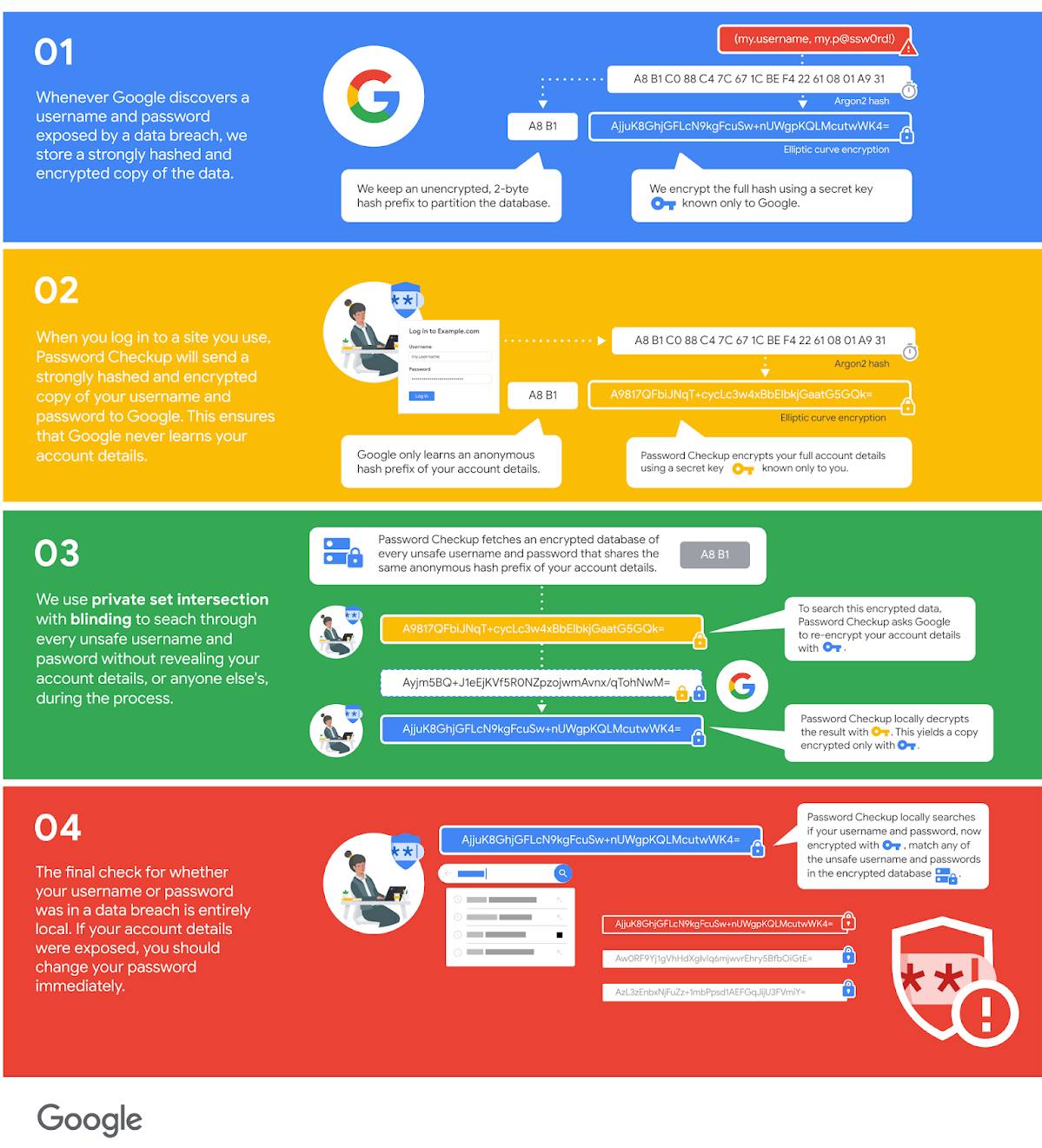

#GOOGLE PASSWORDS PASSWORD#
Step 4: Delete your passwords from ChromeĬhrome will continue to fill saved passwords even after you turn off the built-in password manager. The Chrome password manager (officially titled Google Password Manager) is a free password management tool available within the Chrome web browser. When you tap the button, Chrome will not only navigate to the site, but also go through the entire. On supported sites, whenever you check your passwords and Chrome finds a password that may have been compromised, you will see a 'Change password' button from Assistant. To prevent Chrome from interfering with 1Password, make sure you have the 1Password browser extension installed, then turn off the built-in password manager in Chrome. Going forward, Chrome will help you change your passwords with a single tap. Keeper works much like 1Password and others, storing only. Click Passwords in the menuyou are now in your Google password list, where you can preview, edit, and delete passwords. Click the menu icon (three vertical dots) to the right of your profile pic and select Settings. Step 3: Turn off the built-in password manager in Chrome Keeper Password Manager (35 per Year for Unlimited): Keeper offers a variety of security-related tools, including a password manager. Make sure you sign into the Chrome browser using your Google account to start.
#GOOGLE PASSWORDS SOFTWARE#
Open 1Password on your computer or mobile device and click theĪfter you’ve imported your information into 1Password, delete the unencrypted CSV file, then turn on any backup software you turned off earlier. If you have any credit cards, addresses, or other information saved in Chrome, copy them manually into 1Password. Tired of remembering multiple passwords or annoyed of forgetting them My Passwords app helps you to store all your logins, passwords, and other private. If you want to change anything about the import, like importing the data into a different vault, click Undo Import and start again. Click Import, then click Show Imported Items.Browse to your desktop and select the CSV file you created earlier. Click inside the dotted rectangle to open a file browser. Enter the email address or phone number you use to sign in to Google.If you’re importing personal data, choose the Personal or Private vault. Choose the vault you want to import your data into.Click your name in the top right and choose Import.

In Chrome or another browser, sign in to your account on . Perhaps unsurprisingly, Googles password manager and autofill services are exclusive to Google products, compatible only with Chrome, its web browser.Save the Chrome Passwords.csv file to your desktop.Click “Export passwords” and enter the password you use to log in to your computer.To export your data from Chrome, follow these steps on your computer:Īt the top right of the list of saved passwords and select “Export passwords”. Open up the passwords menu by clicking your profile picture in the top right corner, and click the small key, You can also type chrome://settings/passwords into the Omnibox and hit Enter.Before you export your data from Chrome, temporarily turn off any backup software you may be using, so the unencrypted export file isn’t backed up. When you remove a site, the next time you sign in, you’re given the option to save your password. Note: Turning off password saving doesn't delete previously saved passwords. If you accidentally clicked “Never” when Chrome asks if you want to save your password to a site, here’s how you can remove that site from the exceptions list. Although more complex than Chrome password manager, its platform is still user.
#GOOGLE PASSWORDS HOW TO#
How to Remove a Site From the “Never Saved” List LastPass is a paid password manager that works with every browser.

If you have more than one username and password saved for any single site, click the field and choose which sign-in info you want to use. RELATED: How to Use Google Chrome to Generate Secure PasswordsĪssuming you saved the password, the next time you go to that site’s sign in page, Chrome fills in the sign-in form automatically. This section will cover best practices to secure. We’ll show you how to remove a site from the “Never Saved” list down below. can also gain access to your E-Mail, Google Drive and any saved passwords you have saved inside of Chrome. Click “Save.” If you click “Never,” the site gets added to a “Never Saved” passwords list. After the form submits, Chrome asks if you want to save your password. Now, head to a website where you need to log in, fill in your credentials, and sign in.


 0 kommentar(er)
0 kommentar(er)
